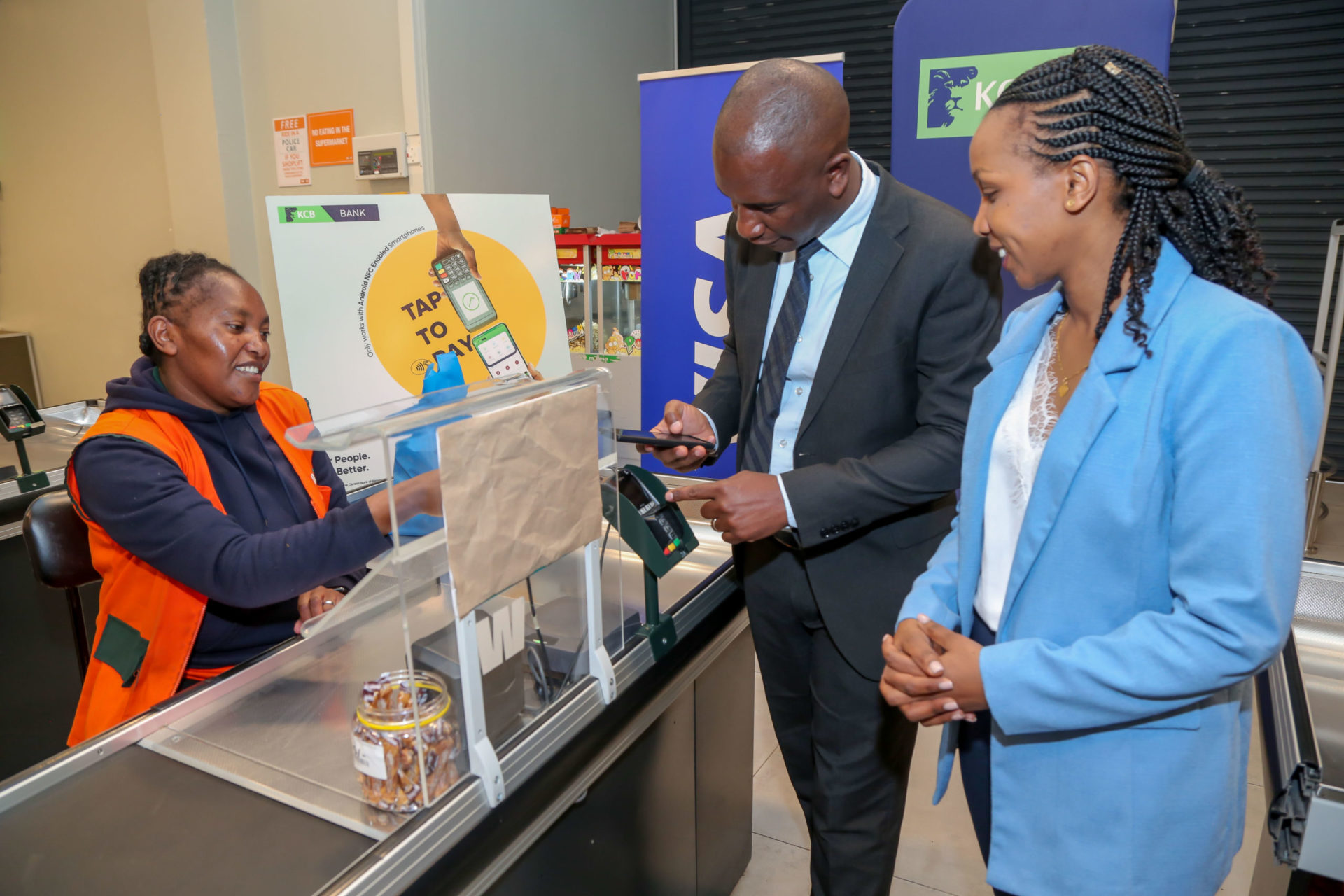KCB and Visa have partnered to offer contactless payments powered by NFC. Telco Safaricom had launched a similar service backed by M-PESA but failed more than five years ago.
Kenya Commercial Bank (KCB) will now offer customers contactless payments using Android smartphones or Garmin wearables. The product is a first in Kenya, as other similar contactless solutions are not based on smart devices but a card such as those offered by Absa and Standard Chartered. Michael Kungu, KCB’s acting director of retail banking, said, “Eliminating the need for a dedicated terminal and enabling the merchant to use their cellphone to accept card payments is revolutionary and a significant game changer within the digital payments ecosystem.”
Why is this important?
Kenyans use mobile money services to settle bills at various retail stores. Debit cards are also another way to make payments. However, these two payment channels are not the quickest because of the friction involved. Cards, for instance, must be swiped and then authenticated with a PIN. Mobile money payments such as M-PESA are even slower because customers have to enter a pay bill number and authenticate the settlement with a PIN.
Contactless payments overcome these issues since they offer convenience. They are effortless and speedy to use, as you don’t have to input a PIN code for all your frequent and minor transactions.
Contactless payments offer advantages to multiple stakeholders. Issuing banks, in this case, KCB Bank, benefit from increased revenue as customers prefer using cards for low-value transactions rather than cash. Retailers enjoy faster check-out processes, improved security by reducing cash handling, and enhanced customer experience due to shorter queues.
Readying contactless payments
KCB, Visa, and Thales have partnered to introduce a new service for in-store payments using the KCB app and near-field communication (NFC)-enabled smartphones. Customers need to digitise their KCB Visa card through the banking app as a one-time setup to use the service. Once the card details are stored on their mobile device, customers can make payments by opening the app, selecting NFC payments, tapping their phone on a contactless-enabled payment terminal, and entering their PIN to complete the transaction. The PIN will only be needed for large transactions or less frequently accessed stores.
The only issue that can be pinpointed is that a customer’s smartphone must be equipped with an NFC chip for the service to work. While many modern phones have NFC, some manufacturers skip the chip for cost-cutting purposes.
“We are continuously working with our partners in the banking sector to enable new and enhanced experiences for consumers. We congratulate KCB for pioneering this technology in Kenya, which we believe will offer customers secure and convenient payment experiences. It builds on the work we have done to expand contactless payments, which has grown substantially over the last three years. This milestone is also indicative of the continued investment Visa is making in safe, reliable, and seamless digital payments as part of our mission to help individuals, businesses, and economies thrive,” said the country manager of Visa Kenya, Eva Ngigi-Sarwari.
In 2017, Safaricom launched a similar product powered by M-PESA and NFC. The telco provided an NFC tag that could be attached to smartphones for M-PESA payments at retail stores. The One-Tap product did not pick up and was later discontinued.
READ MORE: Kenya boosts payments interoperability with state-backed QR codes
The use of bank cards to make payments is on the rise in Kenya. According to the Central Bank of Kenya (CBK), there were only 676,275 transactions made with bank cards in August 2014. By May 2022, that number had grown to 4.4 million transactions.
What do you think about our stories? Tell us how you feel by taking this quick 3-minute survey.






















